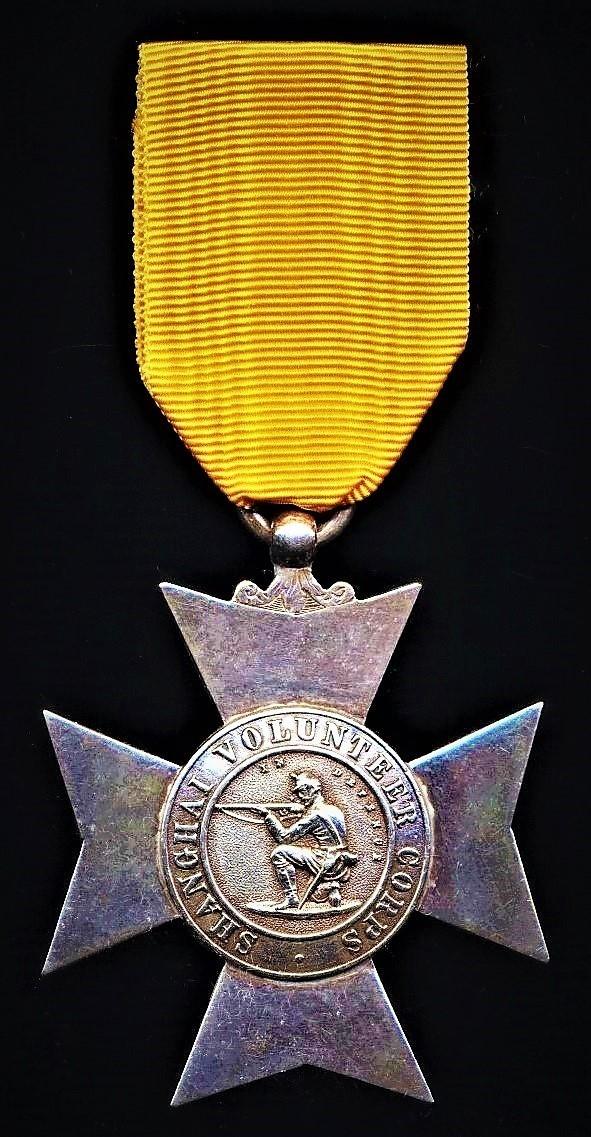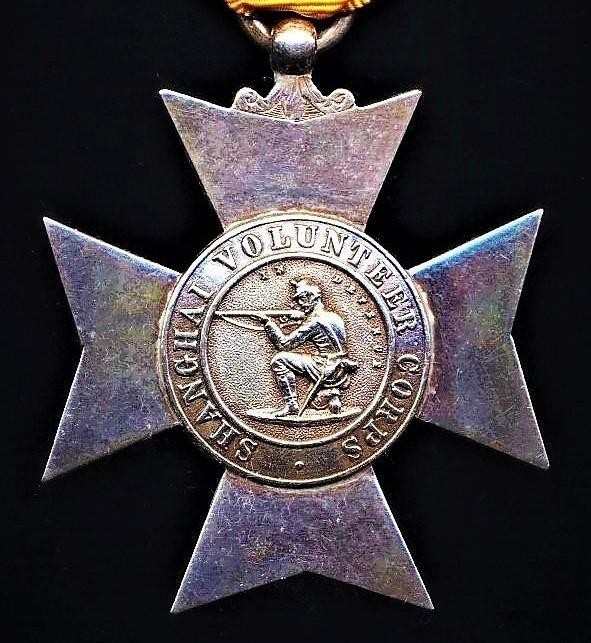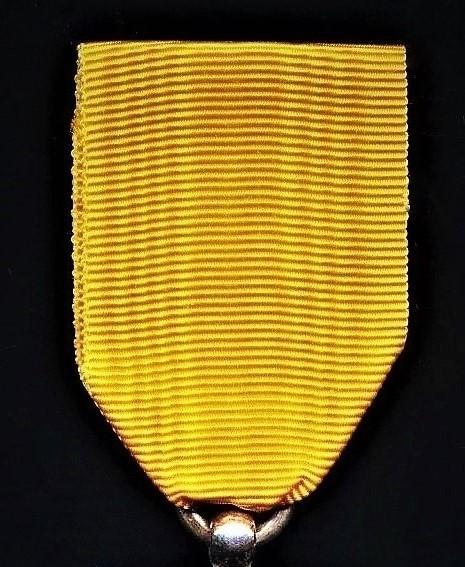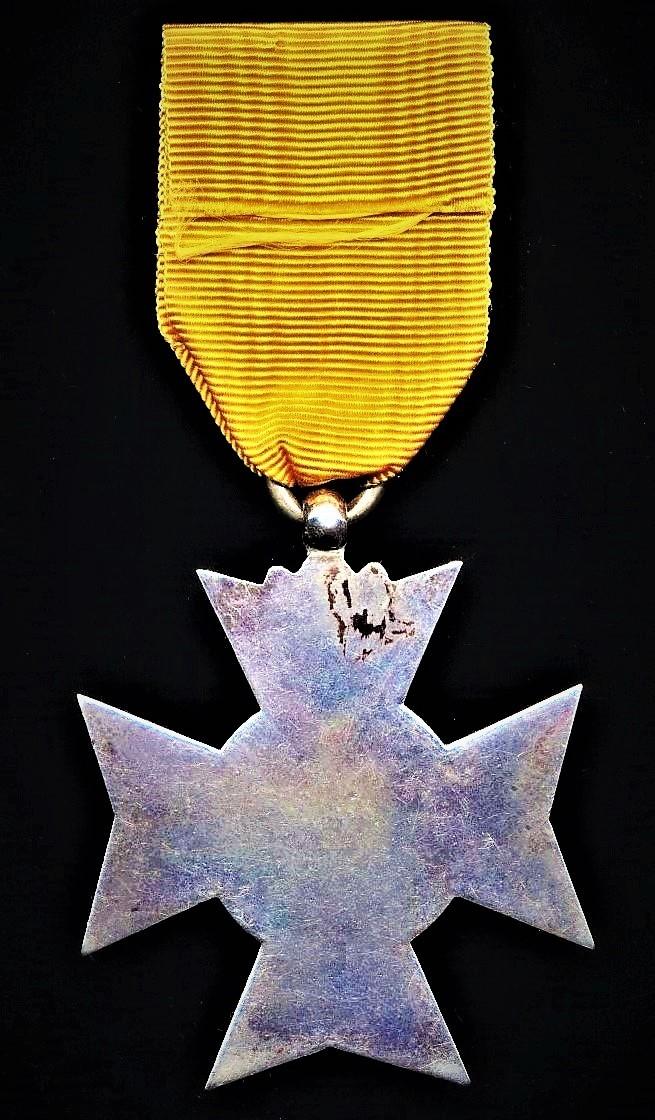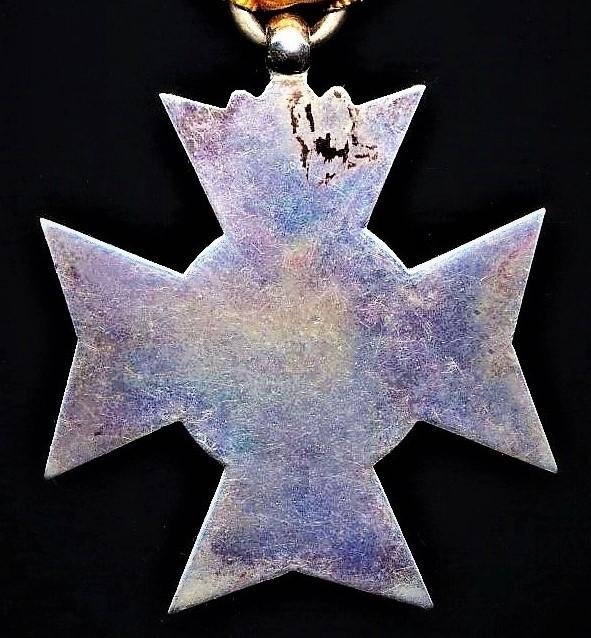Shanghai (Treaty Port): Shanghai Volunteer Corps. Regimental Shooting Medal. Silver. Circa 1861-1900
Obverse: Centre medallion with kneeling firing Volunteer wearing Victorian volunteer uniform & shako, and two word legend 'In Defence' The medallion surrounded by a circlet with unit name 'Shanghai Volunteer Corps'
Reverse: Un-named & un-marked
Suspension: A simple applied floral design with curved shoulders and on top a fixed ball suspension with loose silver riband hanger ring
Metal: Silver
Width: 45mm
Weight: 24g
Note: The Shanghai Volunteer Corps held annual 'Rifle Shooting Contests' from at least 1861, and in addition instituted the 'Shanghai Volunteer Corps Rifle Association' in the treaty port for the promotion and regulation of rifle shooting to international 'Bisley' & 'British Army' standards
The shooting competitions in the Far East, were not restricted to 'Shanghai' domain only, and from at least 1888, regional annual shooting competitions were organized and competed between the Shanghai Volunteer Corps, and other 'Ports' volunteer corps in the Far East, as reported in the 'Volunteer Record & Shooting News' issue of, 15 February 1896;
Quote;
A COLONIAL TRINAGULAR SHOOTING MATCH
Singapore, Shanghai and Hong Kong
The annual team shoot, fired at the respective ports between the Shanghai Volunteers, a team representing the Garrison, Volunteers and Civilians of Hong Kong, and another composed of the same mixed elements representative of Singapore, took place towards the close of the old year. The teams consisted of ten men each, the conditions being two sighting shots and seven counting shots at each range, the distances being 200, 500, and 600, and position, Any. This was the first occasion upon which the Lee-Metford rifle, had been allowed in the contest. Some very high scores were compiled by the leading members of each team, and the averages of the three teams were very high, notably that of the Singapore men, whose grand total of 934 for ten men is very good.....
Unquote.
Prior to 1874, the Shanghai Volunteers Corps were armed with Snider rifles. Circa 1874, the Martini-Henry breach loading rifles were introduced, subsequently transferring to Lee-Metford bolt-action rifles circa 1897, which gave way to the use of Lee-Enfield Rifles by 1912
The Shanghai Volunteer Corps was created on 12 April 1853 during the Small Swords Society's uprising. It saw action alongside British and American military units in the 1854 'Battle of the Muddy Flat', when Qing imperial troops besieging the rebel-held city ignored foreign demands to move further away from the foreign concessions. Concerned that the Qing forces were drawing rebel fire into the settlements, the foreign consuls and military commanders authorised an attack on the Qing forces to dislodge them. The operation was successful, and the battle was thereafter commemorated as an important event in the history of the SVC. The Corps was disbanded in 1855, but was re-established in 1861. In 1870 the Shanghai Municipal Council took over the running of the SVC
The unit was mobilised in 1900 for the Boxer Rebellion (qualifying for the British China 1900 Medal) and in 1914 for the First World War (which did not qualify the SVC for any of the British Great War Medals). In 1916 the British recruited Chinese to serve in the Chinese Labour Corps for service in rear areas on the Western Front to free troops for front line duty. Many members of the SVC served as officers in the CLC. In 1910 the German contingent consisted of one regular company (Prinz Heinrich Kompangie) and one reserve company. When the First World War broke out at least forty of the German volunteers in Shanghai left to join the 7. Kompagnie of the III. Seebataillon in the defence of Tsingtao
At various times during its history the Shanghai Volunteer Corps included; Scottish, American, Chinese, Italian, Austro-Hungarian, Danish, German, Filipino, Jewish, Portuguese, Japanese, White Russian, and Eurasian companies, amongst others. British War Office supplied weapons and a commanding officer. The German and the Austro-Hungarian companies were disbanded in 1917 when China declared war on Germany
An extremely rare - impressive - and previously unrecorded 19th Century medal of the Shanghai Volunteer Corps
Condition: About EF
Code: 21222



